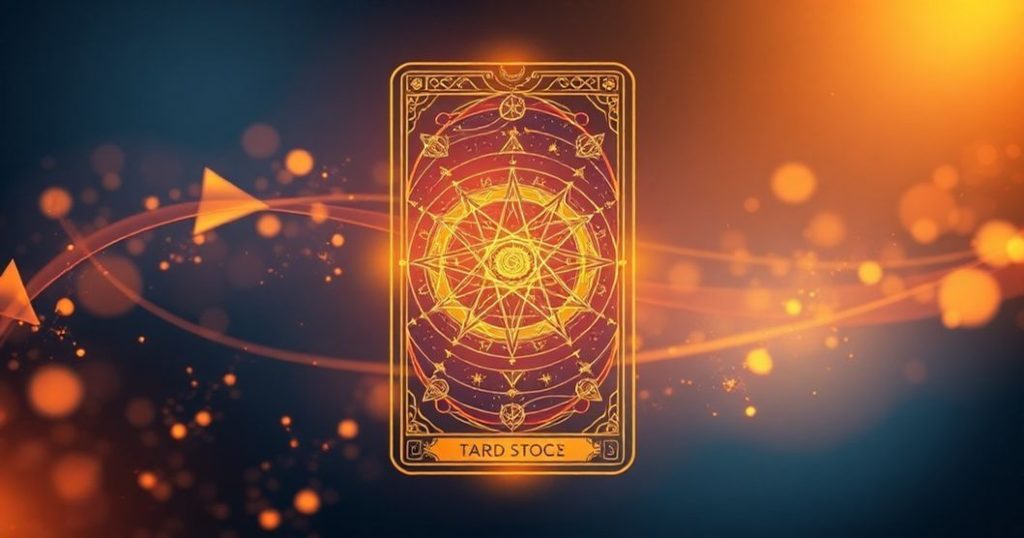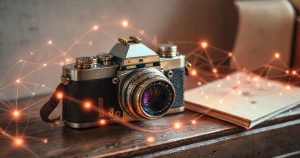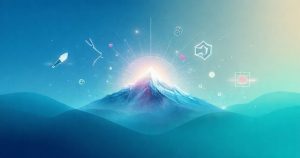Introduction to AI Image Generators for Tarot Card Art
Have you ever been fascinated by the mystical world of tarot cards, wanting to create your own unique deck but lacking the artistic skills? The emergence of AI image generators has revolutionized the creative process, making it possible for anyone to produce professional-quality visuals, including custom tarot card artwork, without extensive design experience. These powerful tools leverage artificial intelligence to translate text prompts into stunning images, democratizing visual content creation and opening new avenues for artistic expression.
The process of creating custom tarot card artwork with AI is both intuitive and complex. On one hand, the simplicity of typing a descriptive prompt and receiving a bespoke image in return is incredibly empowering. On the other hand, mastering the nuances of prompt engineering and understanding the intricacies of how different AI models interpret language can significantly enhance the quality and relevance of the generated images. In this comprehensive guide, we will delve into the world of AI image generators, exploring their capabilities, limitations, and the strategies for harnessing their potential to create breathtaking tarot card artwork.
For those new to AI image generation, the concept can seem daunting, especially when considering the vast array of platforms and models available. However, the core principle remains the same across the board: to provide a text prompt that accurately describes the desired image. The sophistication of the AI then takes over, analyzing the prompt, identifying key elements, and synthesizing them into a visual representation. Platforms like Icebox AI have made this technology accessible, offering a free and powerful AI image generator that can be used by anyone, regardless of their technical background.
As we navigate the realm of AI-generated tarot card artwork, it’s essential to consider the creative potential and the limitations of the technology. While AI can produce images that are visually stunning, the true artistry lies in the conceptualization and the ability to guide the AI towards creating something truly unique and meaningful. This is where the art of prompt engineering comes into play, a skill that involves crafting text prompts in such a way that they elicit the desired response from the AI. By mastering this skill, creators can unlock the full potential of AI image generators, producing custom tarot card artwork that not only reflects their personal vision but also resonates with the symbolism and mystique of the tarot.
Understanding AI Image Generators
The technology behind AI image generators is rooted in complex neural networks that have been trained on vast datasets of images and their corresponding text descriptions. This training enables the AI to understand the relationship between language and visuals, allowing it to generate images based on text prompts. The process involves several key steps, including text encoding, where the prompt is analyzed and understood, and image synthesis, where the AI creates the image based on the encoded prompt. Different AI models may specialize in various aspects of image generation, such as photorealism, artistic styles, or specific themes like tarot card artwork.
One of the most significant advancements in AI image generation is the development of models like DALL-E, Stable Diffusion, and Midjourney, which have set new standards for image quality and diversity. These models demonstrate an unprecedented ability to understand and execute on complex prompts, making them ideal for applications where creativity and precision are paramount, such as custom tarot card artwork. However, the success of these models also underscores the importance of prompt engineering, as the quality of the output is directly influenced by the quality and specificity of the input prompt.
For creators looking to leverage AI image generators for tarot card artwork, understanding the strengths and limitations of different models is crucial. Some models excel at producing highly detailed, realistic images, while others may be better suited for more abstract or stylized artwork. By selecting the right model for the desired outcome and crafting prompts that are clear, descriptive, and well-structured, artists can achieve remarkable results that not only meet but exceed their expectations. Additionally, platforms that offer free AI image generation tools have democratized access to this technology, making it possible for anyone to explore their creativity without significant upfront costs.
Mastering Prompt Engineering for Tarot Card Artwork
Prompt engineering is the key to unlocking the full potential of AI image generators. It involves crafting text prompts that are detailed, specific, and well-structured, providing the AI with a clear understanding of the desired outcome. For tarot card artwork, this might involve including descriptions of the card’s symbolism, the desired color palette, the style of the artwork, and any specific themes or elements that should be included. The more information provided in the prompt, the better the AI can understand the creator’s vision and produce an image that accurately reflects it.
A well-crafted prompt for a tarot card might look like this: “A highly detailed, realistic illustration of the Major Arcana\’s Fool card, set against a backdrop of a sunrise over a rolling hill, with the fool standing at the edge of a cliff, looking out towards the horizon, symbolizing new beginnings and the leap of faith. The style should be reminiscent of medieval illuminated manuscripts, with intricate borders and decorative elements.” This level of detail guides the AI in generating an image that is not only visually striking but also deeply meaningful and symbolic.
Experimentation is also a crucial part of the prompt engineering process. Trying different variations of a prompt, adjusting keywords, and exploring various styles can lead to surprising and innovative outcomes. Additionally, understanding how different AI models respond to prompts can help in tailoring the language and structure of the prompt to achieve the best results. This iterative process of creation and refinement is where the true artistry of working with AI image generators lies, as it requires a deep understanding of both the technology and the creative vision being pursued.
Applications and Future of AI-Generated Tarot Card Artwork
The potential applications of AI-generated tarot card artwork are vast and varied. From creating personalized tarot decks for individual use to producing commercial decks for distribution, the technology offers a wide range of creative and business opportunities. Moreover, the ability to generate custom artwork on demand opens up new possibilities for tarot readings, workshops, and other events, where unique and themed decks can be created to enhance the experience and deepen the connection with the participants.
Looking to the future, the integration of AI image generators with other technologies, such as virtual and augmented reality, could further expand the boundaries of tarot card artwork and readings. Imagine being able to step into a virtual environment where the tarot cards come to life, or using AR to bring the cards into the real world, enhancing the intuitive and mystical aspects of the tarot experience. As AI technology continues to evolve, we can expect to see even more innovative applications of AI-generated artwork in various fields, including education, entertainment, and personal development.
However, it’s also important to consider the ethical implications of AI-generated content, particularly in areas like tarot and mysticism, where the authenticity and intent behind the artwork can be crucial. As creators, it’s essential to approach this technology with respect for its potential and its limitations, ensuring that the use of AI-generated artwork enhances rather than diminishes the value and meaning of the tarot tradition. By doing so, we can harness the power of AI image generators to create new, innovative, and deeply meaningful tarot card artwork that inspires and connects with people on a profound level.
Conclusion: Embracing the Creative Potential of AI Image Generators
In conclusion, AI image generators represent a revolutionary tool for creatives, offering unparalleled opportunities for self-expression and innovation. For those interested in tarot card artwork, this technology provides a means to bring unique and personalized visions to life, whether for personal use or professional applications. By mastering the art of prompt engineering and understanding the capabilities and limitations of different AI models, artists can unlock the full potential of AI image generators, producing custom tarot card artwork that is not only visually stunning but also rich in symbolism and meaning.
As we move forward in this exciting era of AI-driven creativity, it’s essential to embrace the technology with an open mind and a willingness to learn and experiment. The future of tarot card artwork, and indeed all forms of artistic expression, will be shaped by the symbiotic relationship between human creativity and AI technology. By leveraging tools like Icebox AI, creators can tap into this potential, pushing the boundaries of what is possible and bringing forth new, innovative, and captivating works of art that inspire and delight.
Ultimately, the true power of AI image generators lies not in their ability to automate the creative process, but in their capacity to augment and amplify human imagination. As we explore the vast possibilities of this technology, we are reminded that the best creations are those that emerge from the intersection of technology and artistry, where the boundaries of innovation are pushed, and the horizons of creativity are expanded. Whether you are an artist, a tarot enthusiast, or simply someone looking to explore your creative potential, AI image generators offer a doorway to a world of limitless possibility and expression.
Frequently Asked Questions
Q: Can I use AI-generated images for commercial purposes?
A: Yes, many AI image generators, including those offered by Icebox AI, provide commercial usage rights for the images you create. However, it’s essential to review the terms of service for each platform to understand any specific requirements or restrictions.
Q: How do I get started with creating custom tarot card artwork using AI image generators?
A: Getting started is straightforward. Choose an AI image generator platform, craft a detailed and descriptive prompt for your tarot card artwork, and submit it. You can then refine your prompt based on the results, experimenting with different descriptions and styles until you achieve the desired outcome.
Q: Are AI-generated images considered original artwork?
A: This is a complex question that touches on issues of authorship, creativity, and the role of AI in art. While AI-generated images can be highly original and unique, the question of whether they constitute original artwork in the classical sense is a matter of ongoing debate among artists, critics, and legal experts.



